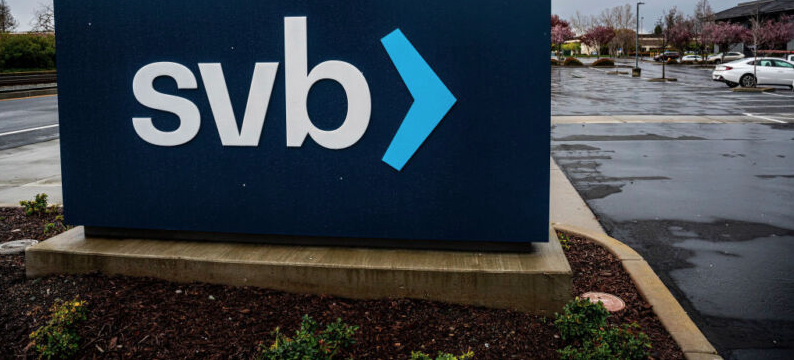Tech-focused lender faced deposit outflows, failed late attempt to raise new capital.
Silicon Valley Bank was shuttered by US regulators on Friday after a rush of deposit outflows and a failed effort to raise new capital called into question the future of the tech-focused lender.
With about $209 billion in assets, SVB has become the second-largest bank failure in US history after the 2008 collapse of Washington Mutual, and marks a swift fall from grace for a lender that was valued at more than $44 billion less than 18 months ago.
The Federal Deposit Insurance Corporation, the US regulator that guarantees bank deposits of up to $250,000, said it was closing SVB and that insured depositors would have access to their funds by Monday.
Many of SVB’s clients were venture capital funds as well as tech and healthcare start-ups, and would have account balances well in excess of the maximum amount insured by the FDIC. The regulator said these depositors would receive an initial payment next week and the rest would depend on what happens to SVB’s assets.
The regulator historically has sought to merge failed lenders with a larger and more stable institution. Washington Mutual, for example, was sold to JPMorgan Chase. The FDIC said it would use the sale proceeds of SVB to fund payouts to larger depositors.
The prices on SVB’s bonds plunged on Friday, with its senior debt trading at about 45 cents on the dollar and its junior debt as low as 12.5 cents, suggesting bondholders are braced for heavy losses.
Earlier on Friday, SVB had abandoned its efforts to raise $2.25 billion in new funding to cover losses on its bond portfolio and had begun looking for a buyer to save it, according to people with knowledge of the efforts.
SVB shares were halted during early trading on New York’s Nasdaq exchange, and its woes hit shares in several other US banks that are seen to have similar depositor and funding profiles.
Trading in Pacific West, Western Alliance and First Republic were stopped due to volatility after they all initially fell 40 to 50 percent. Trading was also briefly stopped in Signature Bank after its shares fell nearly 30 percent. Several of those banks sought to reassure the market by putting out statements highlighting their differences from SVB in terms of asset and depositor base.
The banking group’s troubles stem from a decision made at the peak of the tech boom to park $91 billion of its deposits in long-dated securities such as mortgage bonds and US Treasuries, which were deemed safe but are now worth $15 billion less than when SVB purchased them after the Federal Reserve aggressively raised interest rates.
It had planned to sell $1.25 billion of its common stock to investors and an additional $500 million of mandatory convertible preferred shares, which are slightly less dilutive to existing shareholders. That would have helped bridge the roughly $1.8 billion in losses SVB incurred from the sale of about $21 billion of securities initiated to cover customers withdrawing deposits.
On Thursday, SVB and its underwriter Goldman Sachs raced to complete the share offering. While Goldman had secured enough interest in the convertible bond deal by mid-afternoon, the common stock sale was struggling as SVB shares slid, according to one person with knowledge of the efforts. Private equity firm General Atlantic had also committed to provide $500 million in equity if the offering had been completed.
The bank’s shares registered their biggest-ever decline on Thursday, wiping $9.6 billion off its market capitalisation. SVB shares had fallen more than 60 percent in pre-market trading on Friday before the trading halt.
US bank failures have been extremely rare in recent years; the last FDIC insured bank to close was in October 2020, and the last time there were more than 10 was 2014.
The ramifications of SVB’s troubles may be widely felt. The lender is the banking partner for half of US venture-backed tech and life sciences companies, and is a large presence in offering credit lines to the $10tn private capital industry.
Its customers had begun to grow increasingly fearful of the bank’s financial position on Thursday, when some start-ups began pulling their cash. Some venture capital groups acknowledged that they had begun advising some of their portfolio companies to consider withdrawing a portion of their deposits from the lender earlier this week.
“SVB’s 40 years of business relationships supporting Silicon Valley evaporated in 14 hours,” said a senior executive at one multibillion-dollar venture capital fund.
Reporting by Joshua Franklin, Eric Platt, Ortenca Aliaj, Antoine Gara and Brooke Masters in New York and Tabby Kinder and George Hammond in San Francisco. Additional reporting by Stephen Gandel in New York and Robert Smith in London.
© 2023 The Financial Times Ltd. All rights reserved. Not to be redistributed, copied, or modified in any way.
- vitorio
-

 1
1




Recommended Comments
There are no comments to display.
Join the conversation
You can post now and register later. If you have an account, sign in now to post with your account.
Note: Your post will require moderator approval before it will be visible.